
Hands Up!

Forced to conform to a particular posture, the subject fits within the confines of each container. The ambiguity within the subject-frame dynamic compels the viewer to abandon traditional conceptions about artwork versus frame, and instead to consider the frame's importance as equal to that of the painting itself.

All Things Equilateral
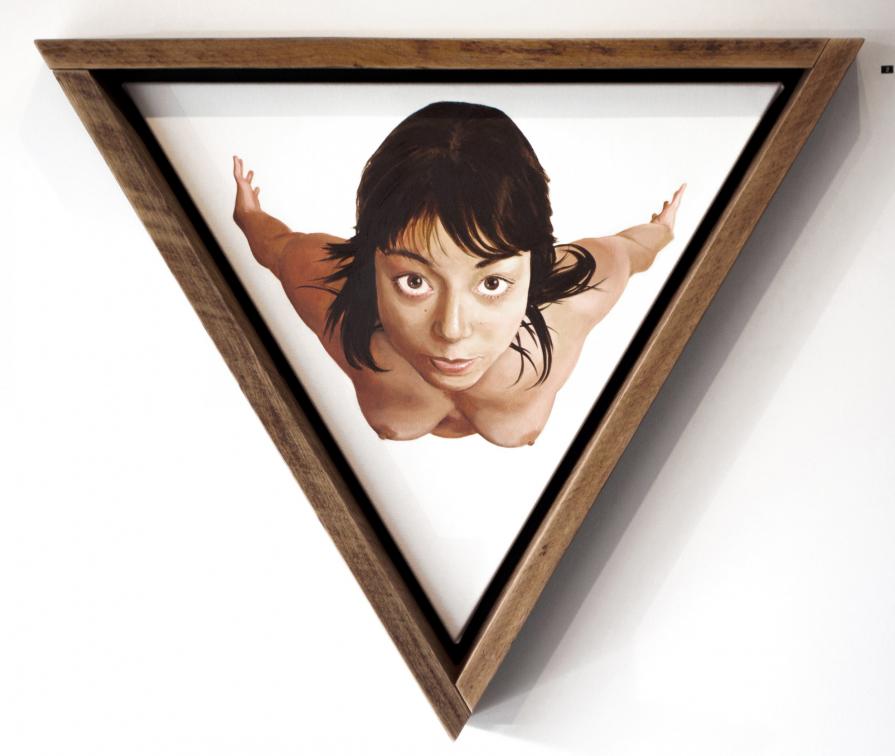
The crate-like frames allude to mass manufacture and the dislocation and resulting invisibility of the maker in the contemporary product to consumer cycle. The rigidity of the man-made structure sits in stark comparison to the vulnerability of human flesh. The disposability of the crate stifles the subject’s individuality, dehumanising and commodifying the now human product.

In A Round About Way
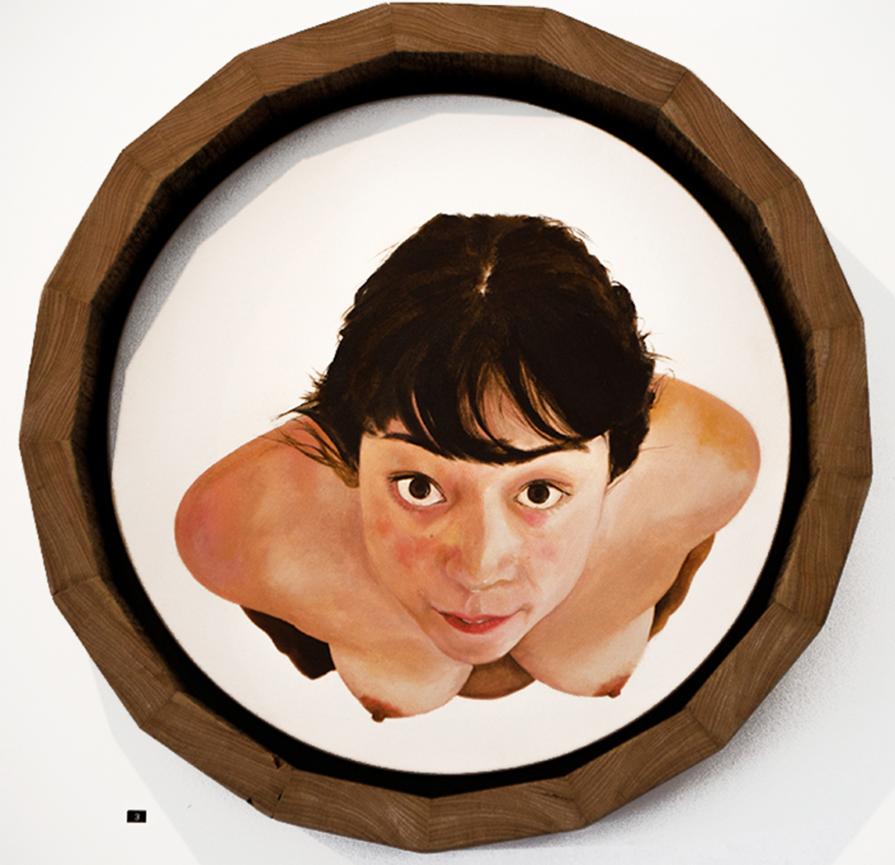
Extending the dialogue outside of the bounds of the frame, "In A Round About Way" is designed to provide numerous display options; on the floor, hanging from the ceiling or mounted on a wall. This work seeks to challenge the concept of passive viewing, and instead drive the audience to engage with it as an obstacle. Through unconventional display, the elimination of directional cues leaves only the direction from which the audience views the subject, and the direction from which the subject looks back at the audience.

Threshold

The deep frame is visually analogous to a delivery crate, emphasising the metaphor of the frame boxing in the female subject and packaging her body as a commodity. By reimagining the 4-cornered archetype, "Threshold" allows the subject the freedom and autonomy to explore the space outside of the frame.
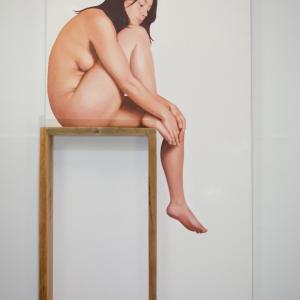
What Goes Up

The traditional frame was intended to draw the eye towards the painting. By challenging convention, this series discusses the empowerment of the subject. The subject’s new-found freedom allows her to interact with the frame, triumphing over a space within which she was once imprisoned. "What Goes Up" presents a new dichotomy for consideration; from such a height it is easy to see how far one might fall.

Paradise Lost?
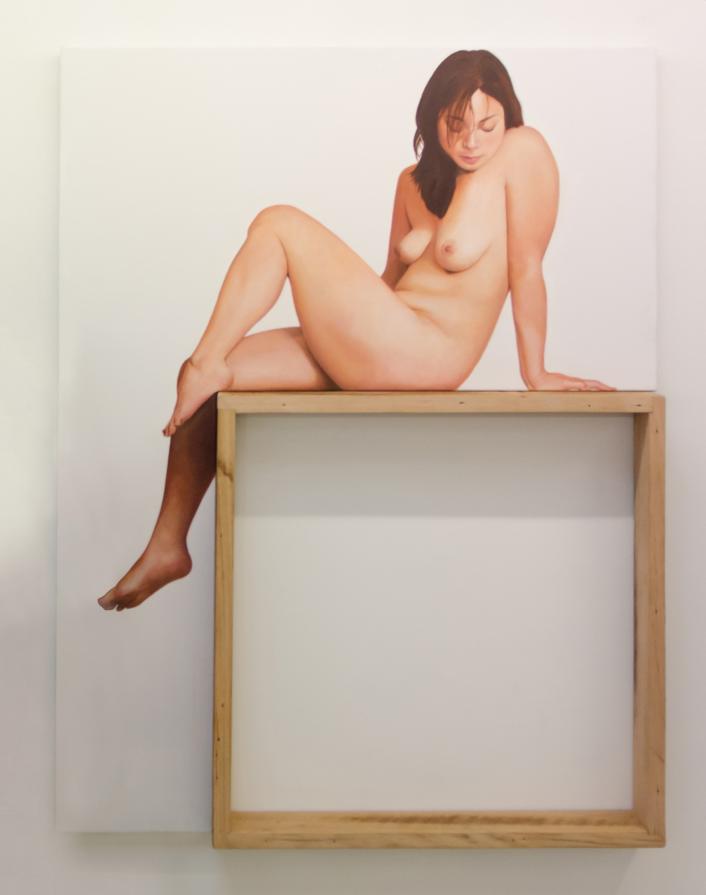
No longer the passive subject of traditional painting, this canvas-frame configuration allows the subject dominance over the frame, and enables her to become an active participant within the gallery space. Elevated to the privileged position of spectator, the subject and audience alike are invited to consider the now empty frame. From this new vantage point emerges the question of whether the frame exists to imprison or protect.

Weight Of The World

The changes to the traditional physical form of the frame and canvas are representative of the conceptual premise of this series; the role of the woman as subject. By positioning the subject beyond the frame, a spectator of a space she usually inhabits, this series examines the subject’s independence. Visual depictions of women’s bodies within contemporary culture repackage the dissected forms for collective consumption. The women and audience alike have no say in when, where, and how each body is viewed as it is redistributed back to them. "Weight Of The World" considers the literal and symbolic burden shouldered by women, as the natural shapes and contours of their bodies battle with the unrealistic, homogenous collective standards created by this barrage of edited images.
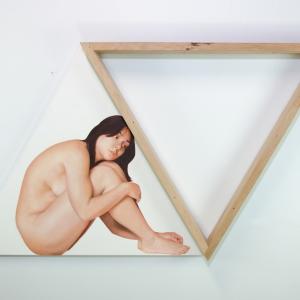
Immovable Object

Liberated from their preconceived roles, the subject and audience alike are forced to consider this new relationship between subject and frame within a framework of theory that is no longer fully applicable. "Immovable Object" seeks to reconcile these seemingly conflicting positions through the metaphor of the subject’s struggle with spatial emancipation while faced with a frame which one represented the limits of her existence.

Truce
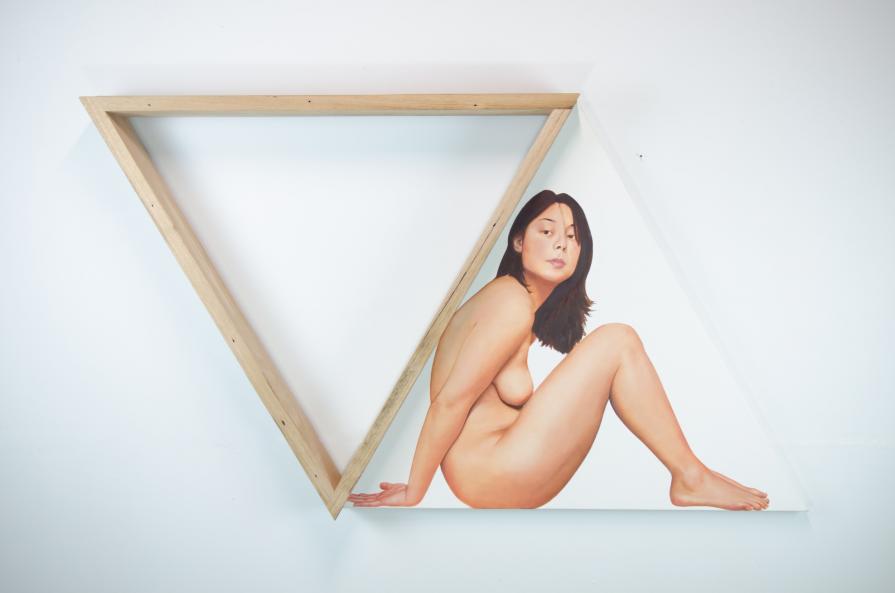
Conventional portraiture strips the subject and the viewer alike of autonomy; the subject through confinement, and the viewer through the artists’ adhesion to established paradigms. As the last work of the Threshold series which explored the implications of the subject’s new-found freedom through relocation, "Truce" seeks to take a moment of reprieve to contemplate the various roles within the subject-frame power struggle.























Comments 0
Say something